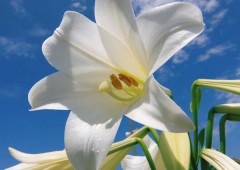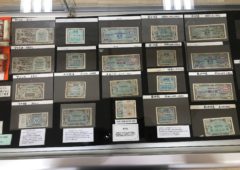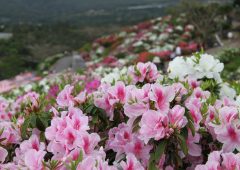2016.11.14
National Theater holds kumiodori appreciation class

Shushin Kaneiri is considered the most important piece of kumiodori. The tale shares many similarities to the Dojoji legend told in many other pieces of performing arts.
Kumiodori is a classical Ryukyu musical that was originally created to provide entertainment and diversion to Chinese envoys, who traveled to the Ryukyu Kingdom to manage the tributary relationship that the Kindom had with the Chinese empire.
The origin of Kumiodori can be pinpointed to the capital of Shuri in 1719, where Tamagusuku Chokun, a Ryukyu courtier who lived from 1684–1734, is credited with creating the art form as a frequently presented court entertainment. Kumiodori is actually a combination of several different types of East Asian dance-performances, and the Japanese government now recognizes it as an Important Intangible Cultural Property. In 2010 it was inscribed on the UNESCO Representative List of the Intangible Cultural Heritage of Humanity.
A Kumiodori Appreciation Class is scheduled to take place on Nov. 16 through 19 on the large stage of the Okinawa National Theater, located in Jitchaku, Urasoe. The class consists of two parts, one is an explanation of Kumiodori and the other a Kumiodori play.
The play is called “Shushin Kaneiri” and it’s tells a story about a handsome young man named Nakagusuku Wakamatsu on his way to Shuri Castle when a nightfall causes him to get lost. He goes to ask someone’s house if he can stay the night. A young woman living in the house says, “I’m alone and my parents are out, so I can’t let you in.” But after seeing the young man clearly, she changes her mind.

About sixty kumiodori pieces have been discovered, most of them composed by Chokun. All of them are related to Japanese Noh in some way.
Smitten, she tries to get close to him but he strongly refuses. As she persists, he gets scared and escapes the house seeking for help from Sueyoshi Temple. However, she has followed him, but people who work at the temple try to stop her in vain from coming in.
In the temple, Wakamatsu hides inside a bell. While she is seeking him, the people in the temple help him escape. After failing to find the young man with whom she by now has fallen madly in love, she turns into a devil.
The show starts at 14:00 on Nov. 16 and 19. On Nov. 17 and 18, there are two shows, one is starts 10:30 and the other at 14:00. Free audio-guide is available in English, Chinese, and Korean on Nov. 19th only.
Admission is ¥2100 for adults and ¥1000 for children under high school student age. Tickets for groups of over 10 people cost ¥1,600 per person.
Tickets are available at National Theatre Okinawa ticket counter on the day of the show. The counter is open from 10:00 to 18:00. Reservations by phone are taken 30 minutes earlier than office hours. Call 098-871-3350.



 2024.04.26
2024.04.26 2024.04.23
2024.04.23 2024.04.22
2024.04.22 2024.04.10
2024.04.10 2024.04.04
2024.04.04 2024.04.02
2024.04.02 2024.03.03
2024.03.03 2024.02.26
2024.02.26 2024.02.22
2024.02.22 2024.02.13
2024.02.13






